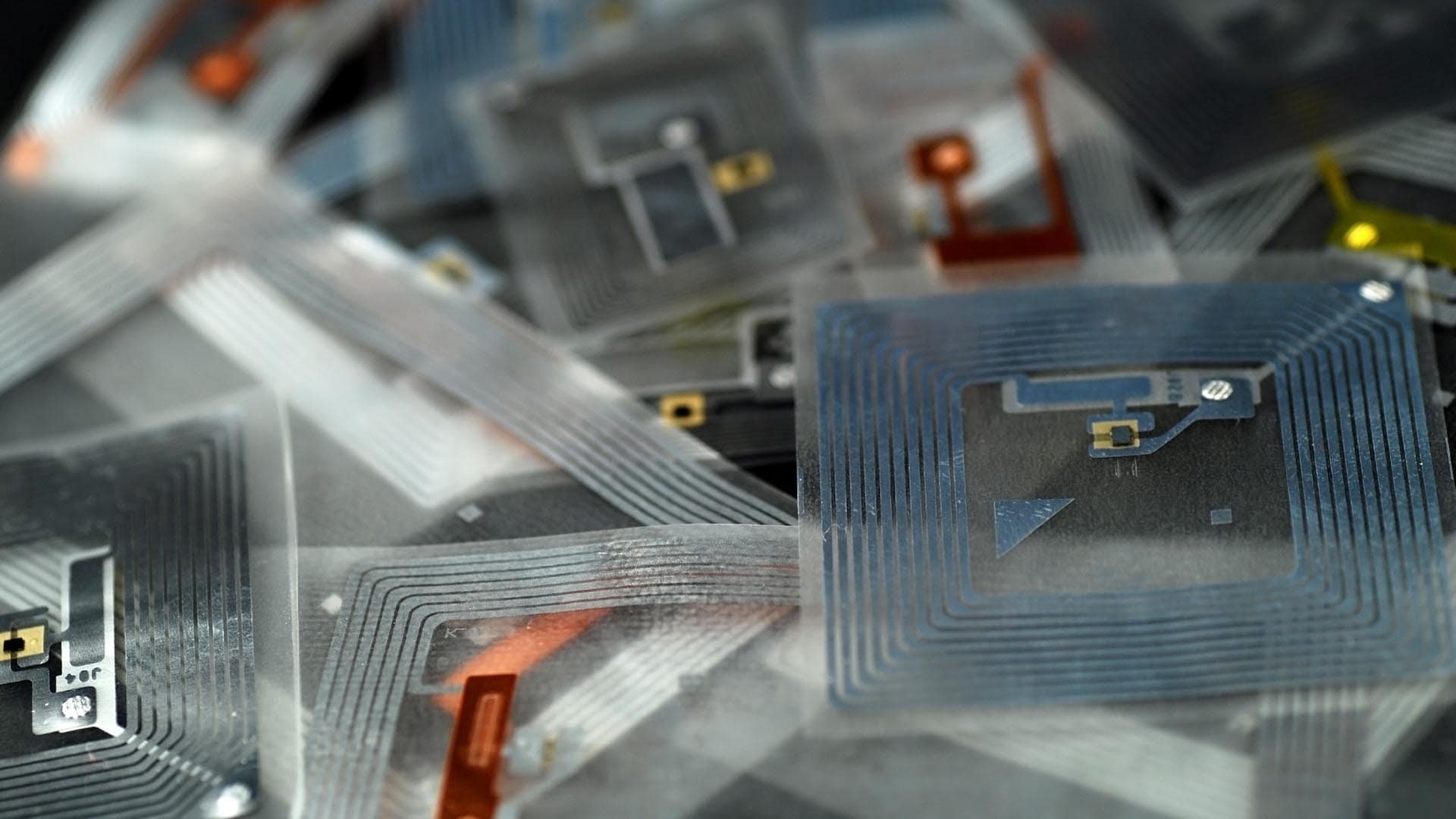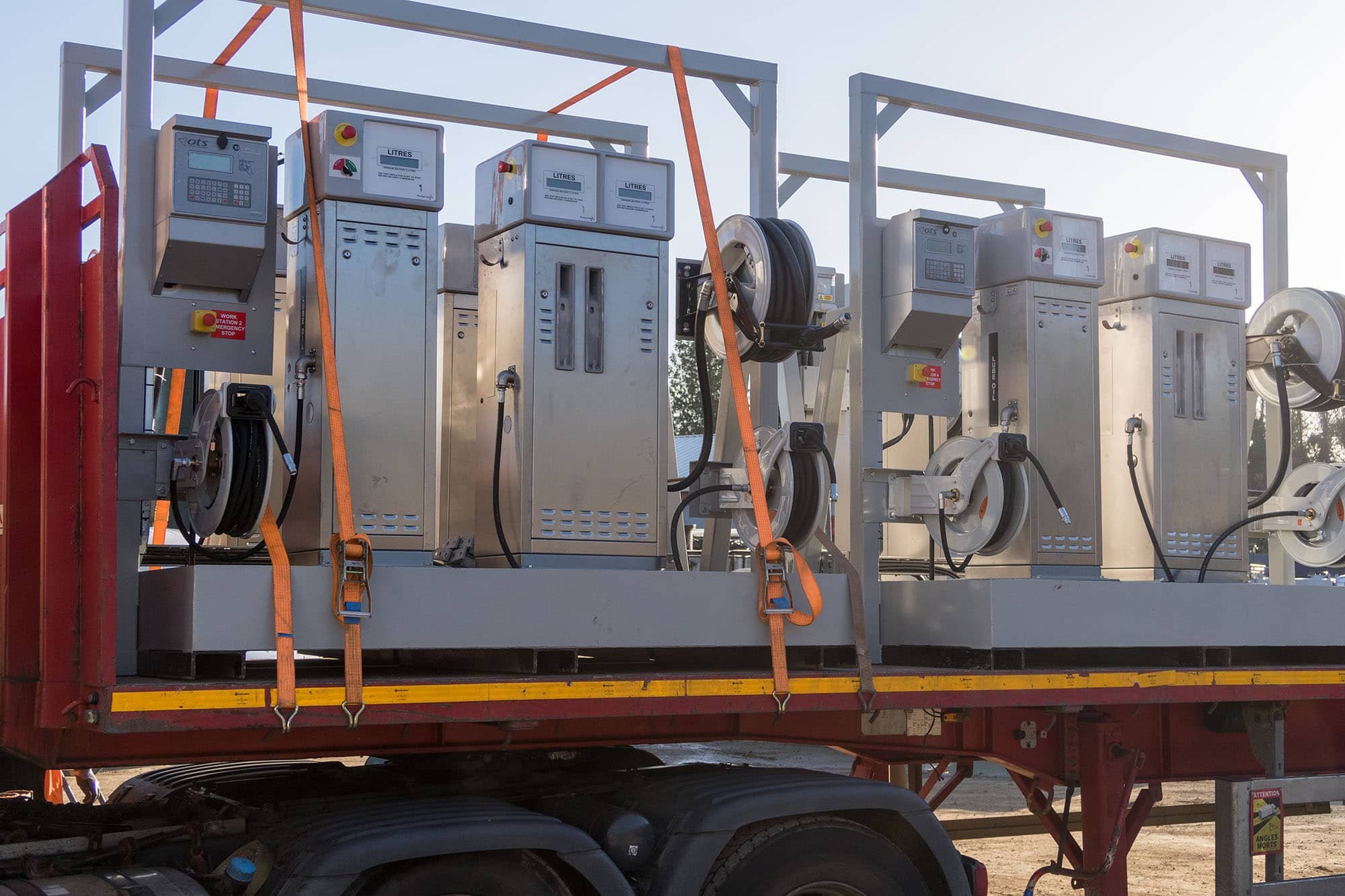
ID Devices
Whether the ID is for vehicles or people, we have the most comprehensive range anywhere.
Using ID devices to enable Automatic Mileage Capture
Using RFID devices enables simple & effective fuel management.
The vehicle stops at the fuel island and turns off its ignition, this initiates its telematics system to update its server with position and mileage information
Fuel Control Terminal is presented with vehicle ID
The Terminal authorises the ID over the Internet via the mobile data network
At the end of the delivery, the fuelling details are forwarded to the Fuel Server in real time.
As the fuellings are received at the server, it connects to the telematics providers server with the vehicle ID.
The vehicle mileage sent by the telematics server is added in to the fuelling transaction on the server.
Glossary
-
Automatic Mileage Capture - The ability to gather mileage information (or engine hours) without human intervention.
-
Automatic Vehicle Recognition - The ability of the system to ID a vehicle which doesn’t require the user to use a hand held ID device.
-
A control network used on modern vehicles to manage everything from the brakes to the indicators using a two wire network. Devices can be added to a vehicle which read the mileage from the CAN Bus and convert this in to mileage pulses.
-
On Board Device. A small box of electronics which manages the functions of the ID system on the vehicle. Typically it will wait for an ID request whilst counting mileage pulses from a mileage transducer.
-
Radio Frequency ID - This usually refers to hand held contactless tags where the data is read using a reader which has no direct electrical connection.
-

RFID Tags
This is the most common ID method used in Fuel Management systems. The tags can be used to identify both vehicles and drivers. RFID tag technology is VERY reliable and is unaffected by dirt or water. The system is unique in that it can be configured to use most of these legacy tags, reducing the cost of an upgrade to a Jigsaw system.
-

Magnetic Cards
Whilst not as robust or reliable as RFID tags, if vehicles have already been issued with a fuel card for off site fuel purchases, then they may also be used on your own site through the system. If only part of your fleet has been issued with cards, then RFID tags may be issued to the rest of the fleet as the two reader types can co-exist on the same terminal.
-

Dallas keys
Used less and less as low cost and reliable RFID tags took their place, nevertheless, the system can still read this type of ID device, lowering the cost of replacing your system. Typically, a Dallas reader would be fitted alongside the standard RFID tag reader so that the system may be migrated over tome to RFID tag only, reducing costs and increasing reliability.
-

Midas AMC
This system has a vehicle mounted OBD fitted to each vehicle and a key issued to each driver (or fueller). To fuel, the driver simply touches the Midas tag on to the vehicle, then on to the fuel island terminal.
The Midas touch tag is initially programmed with the drivers ID number, and when touched on to the vehicle, the vehicles ID and mileage are written to it.
-

EasyFuel+
This is one of the most secure fuelling methods as the nozzle has to be in the filler neck of the vehicle before fuel will flow. As its name suggests, operation is simple - the user simply inserts the fuel nozzle and the EasyFuel+ system does the rest.
-

FuelGuard AMC
This system may be used along side Hand Held Tags, Cards or just about any of the other Vehicle ID methods described here and adds the ability to capture a vehicles mileage or hours run automatically whilst the vehicle is fuelling.
For Mileage capture, the FuelGuard requires a source of pulses proportional to distance travelled - these may be from a tachograph or a CANBus interface.
-

FuelWand
This is mainly used in mobile refuelling systems where a Vehicle mounted RFID tag is permanently fitted to a vehicle or piece of equipment to be fuelled. The fuel hose would be deployed from the fuel bowser, then the tag read with the FuelWand, starting the fuelling.
-

Laser Plate
This uses a battery powered Laser Bar code Reader to read a bar code permanently fixed to the vehicle. The bar code reader is linked to the fuel island terminal using Blue-Tooth radio so there are no wires to get in the way.
The scanner may also be used to scan a printed sheet of bar codes which identifies the vehicle and limits the amount of fuel which may be drawn.
-

TeleTag
This system is most often used for bus refuelling where a constant stream of vehicles fuel one after the other.
Each vehicle is fitted with a long range ID Tag. Once the vehicle stops, the pump starts and the vehicle is fuelled. The fueller may also be identified by wearing or holding a fueller tag so that no fuel may be drawn unless an authorised fueller is present.
-

Personnel ID’s
Many companies issue their on site staff with RFID devices for on site door access etc. In many cases it may be possible for the system to read these tags so they may be used to identify drivers when they fuel vehicles.
By providing an example of the tags used, we can check if the tags may be read by the Fuel Island system and used for Driver ID.
Automatic Mileage Capture using your Vehicle Tracking System
Whilst not strictly an ID method, our systems can have Automatic mileage capture added to any of the above ID methods by interfacing directly from our server to your telematics (vehicle tracking) providers web service.
The fuelling takes place as normal on the fuel island with no requirement for the driver to input a mileage. Once complete, the fuelling transaction is sent immediately to the web server which triggers it to request the current mileage of the vehicle from the telematics server. If only some of your vehicles have tracking systems, that isn’t an issue as the rest can be prompted to use typed mileage ID, or to use FuelGuard Auto Mileage Capture.


